Next day, our last day in Barcelona, just as we were leaving, we visited the Museu Picasso, but it was a Monday and we should’ve known better. There was another B for Barcelona by the door but it was closed, all day. This had been our first stop three years ago on our previous visit to Barcelona, and was most memorable for Picasso’s variations on a theme by Velázquez, called Las Meninas.
The Velázquez painting is in the Museo del Prado in Madrid (and perhaps also in Kingston Lacy in Dorset). I’ve not seen it face to face but here’s an appreciation by Jonathan Jones:
Las Meninas is one of the most profound and enigmatic paintings in the world.
You are the king. You stand patiently posing for your portrait, while the royal painter looks sombrely back at you from behind his canvas. This is the position into which Velázquez puts the viewer of Las Meninas. It’s a big and paradoxical picture, a portrait not of the king and queen – who are only reflected in the painting in a bright mirror at the back of a high, deep room – but of the anxious court mirrored in their – our – eyes. Velázquez shows us the world a monarch sees.
The “meninas” are identically-dressed maids who fuss over the Infanta Margaret Theresa, an expensively dressed little girl who even as she plays in front of her royal parents appears on her mettle, under scrutiny. She looks nervously at them while two court dwarfs and a dog are on hand to provide entertainment. One dwarf kicks the dog.
It’s a grave, chilly little world. No one (except the dog-kicker) seems relaxed and no one looks emotionally close to the monarchs – to us, who stand where they stand. The scene is intensely theatrical, everyone in their costumes and everyone on best behaviour. But at a door in the background a man is coming with news from Spain’s vast and, when Velázquez was at work, decaying empire.
Presumably Philip IV of Spain was happy with this ingenious conceptual portrait. As painter to the king, Velázquez was showered with honours. But this painting menaces the fabric of reality and the illusion of identity with its consummate game of mirrors. Do kings and queens exist only in the eyes of others? And if that is true of monarchs then who on earth are you and I, transported uneasily by Velázquez into the skin of royalty, attended by a painter who looks at us, polite, exact, and utterly ruthless in his craft?
This painting is a disenchanted glass. Another Las Meninas is a shattering thought.
Pablo Picasso was so enchanted by this painting that he toyed with it over and over again, playfully, satirically, obsessively, recreating and reinterpreting it, in whole and in parts, he made a suite of 58 paintings titled collectively Las Meninas. He isolated the painting’s various elements and figures, he altered the lighting, changed the colours, and substituted the original mastiff for his own dog, a beloved dachshund called Lump. The series also includes landscapes, paintings of doves and a portrait of Jacqueline, who became his wife four years later. He donated all the paintings to the Museu Picasso in 1968, the only complete series of his paintings to have remained together. Here are some of them…
These last three, Els Coloms ( The Doves), seem very Côte d’Azur, very Matisse. I’m not sure of their connection to Velázquez but they add a great joie de vivre to the collection. They’re probably more to do with La Californie, Picasso’s house in Cannes, where he worked in seclusion from August 17 until December 30, 1957 on the Las Meninas series. Maybe the doves were light relief from Velázquez. Other exhibitions come and go at the Museu Picasso but Las Meninas will always remain at its heart.
I was sorry we didn’t get to see them again. The trees in the backyard were all we saw. They shall stand as surrogates for the Infanta Margarita Theresa, doña Isabel de Velasco, doña María Agustina Sarmiento de Sotomayor, Maribarbola, Nicolas Pertusato and Diego Rodríguez de Silva y Velázquez.
Las Meninas / Las Meninas / Las Meninas





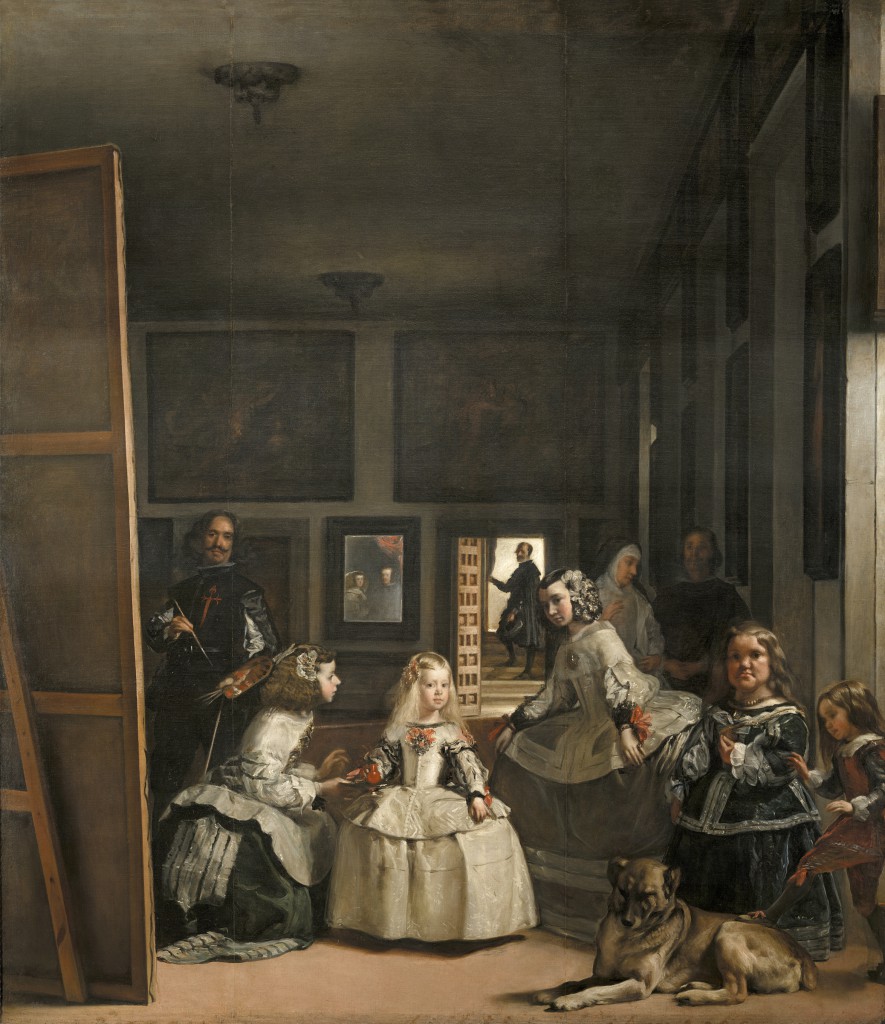
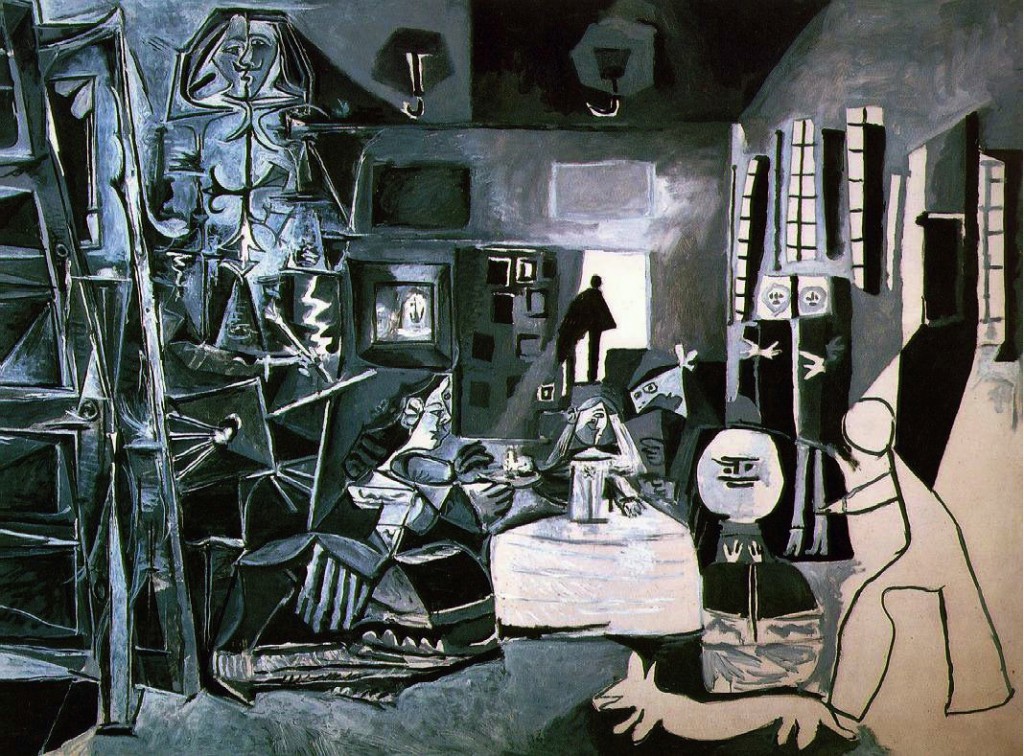
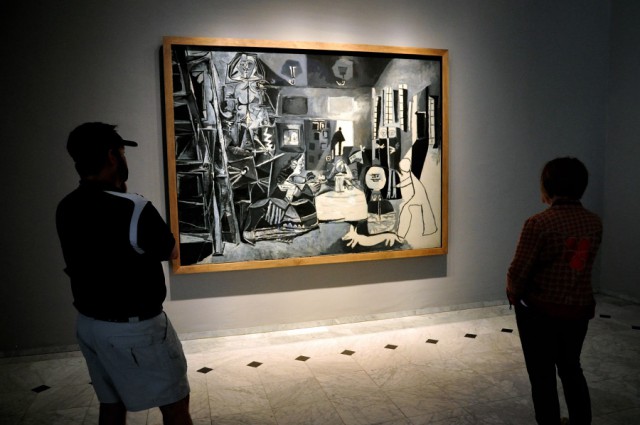
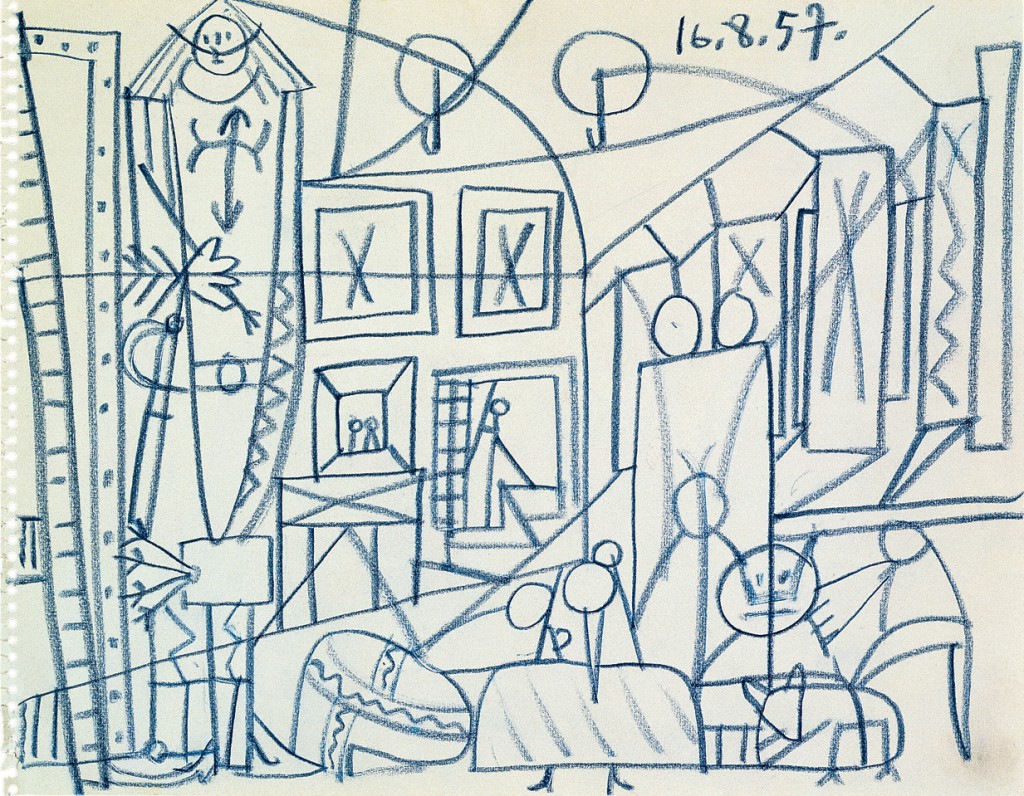
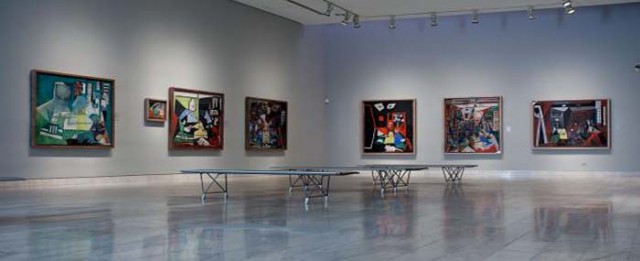
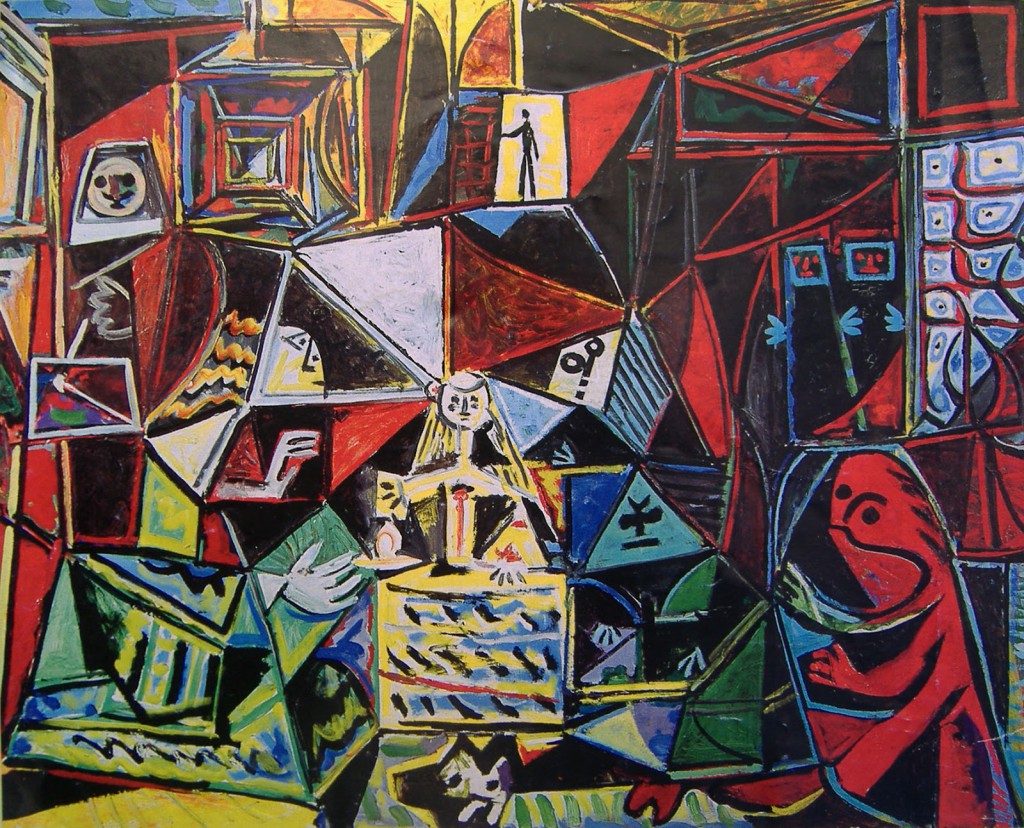
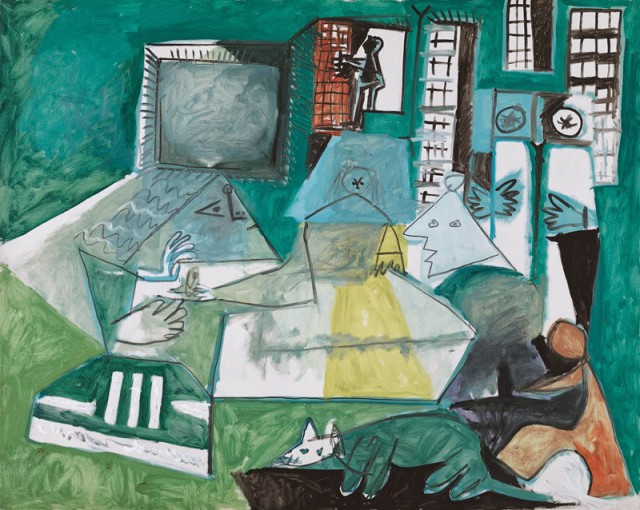

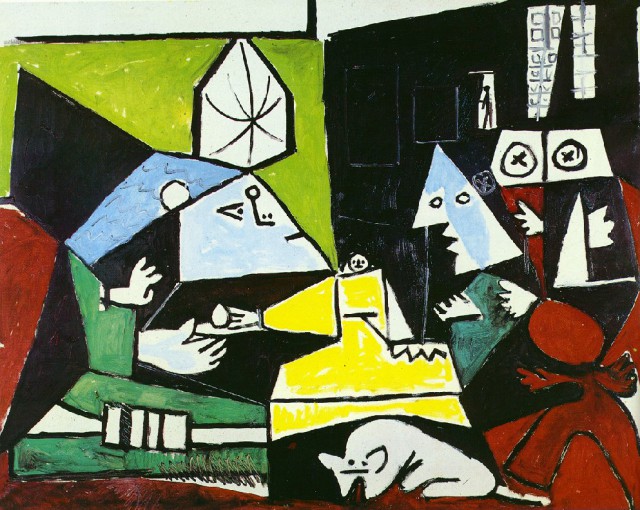
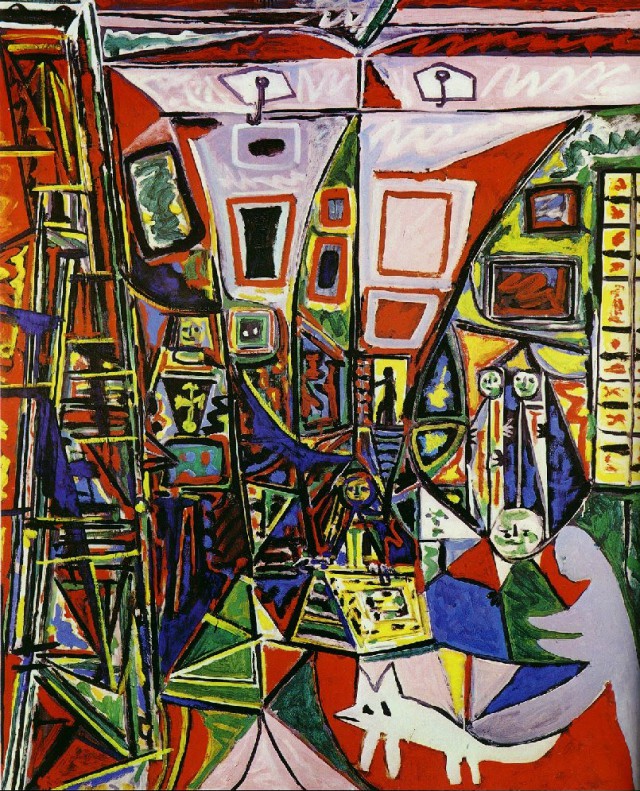
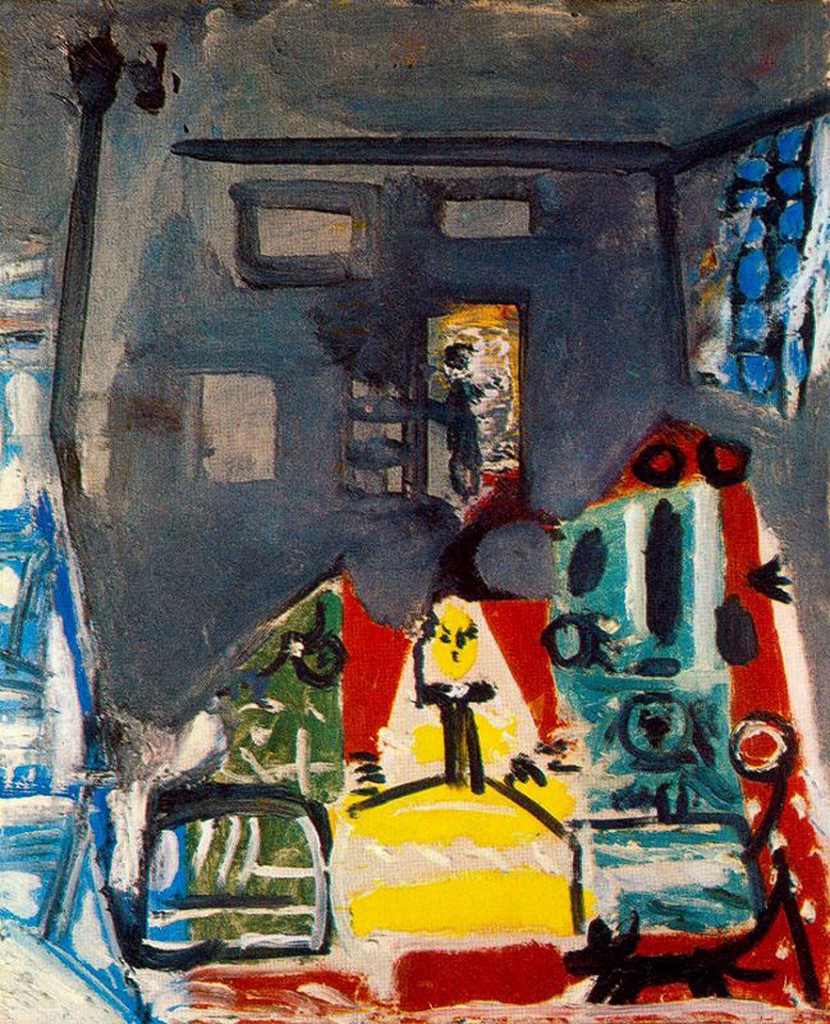
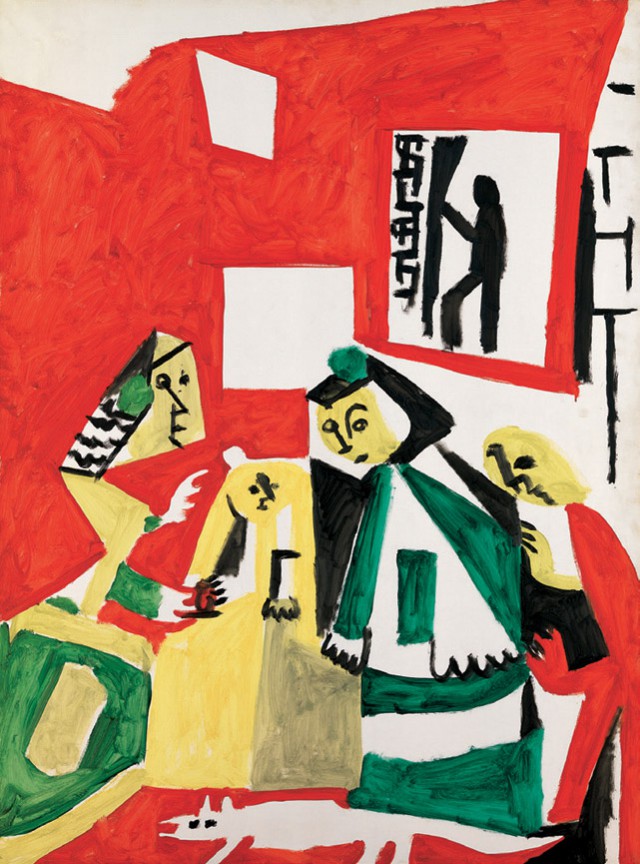
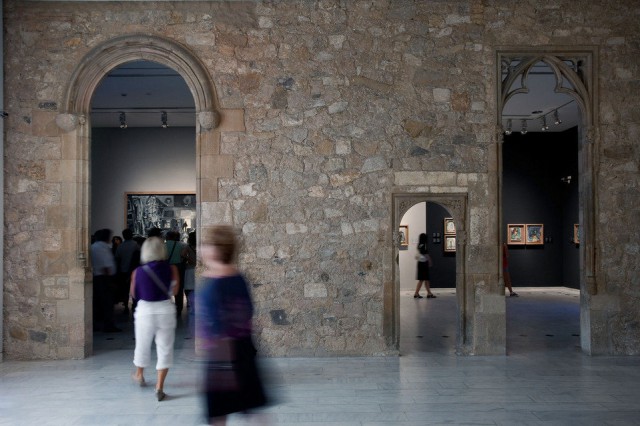


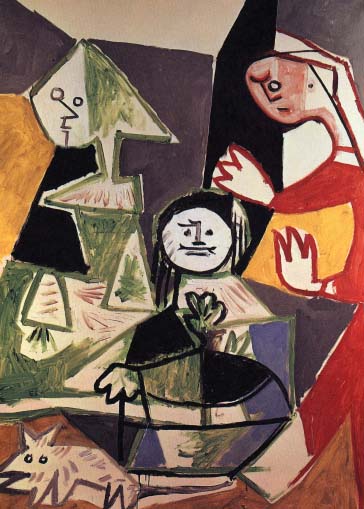
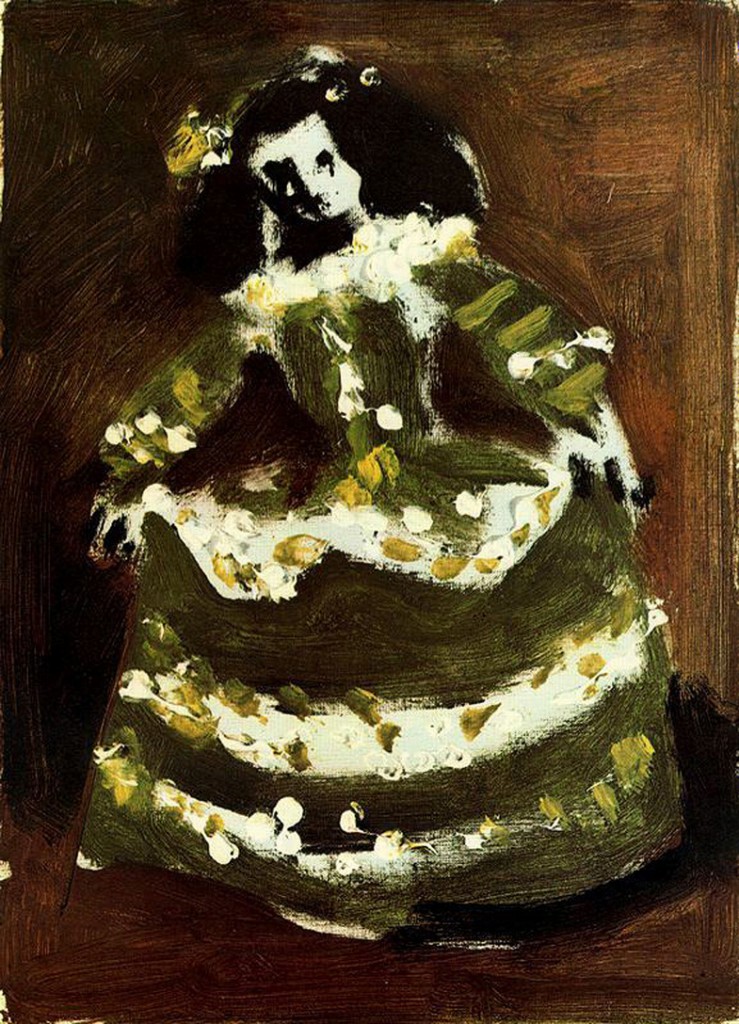

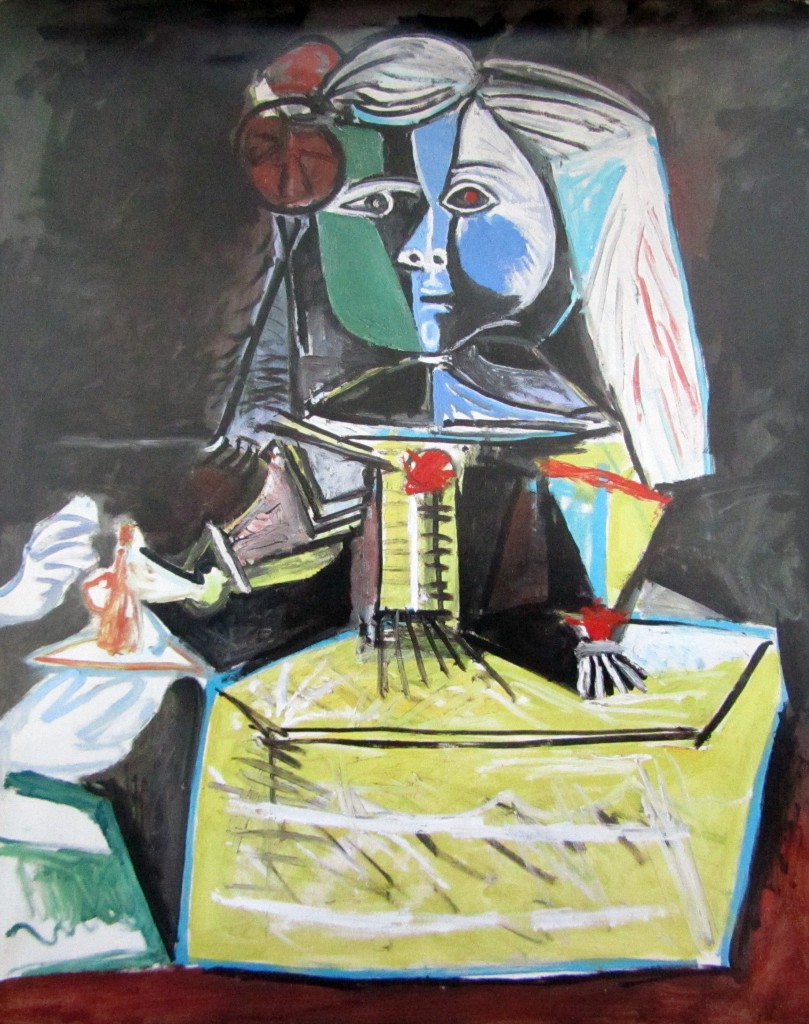
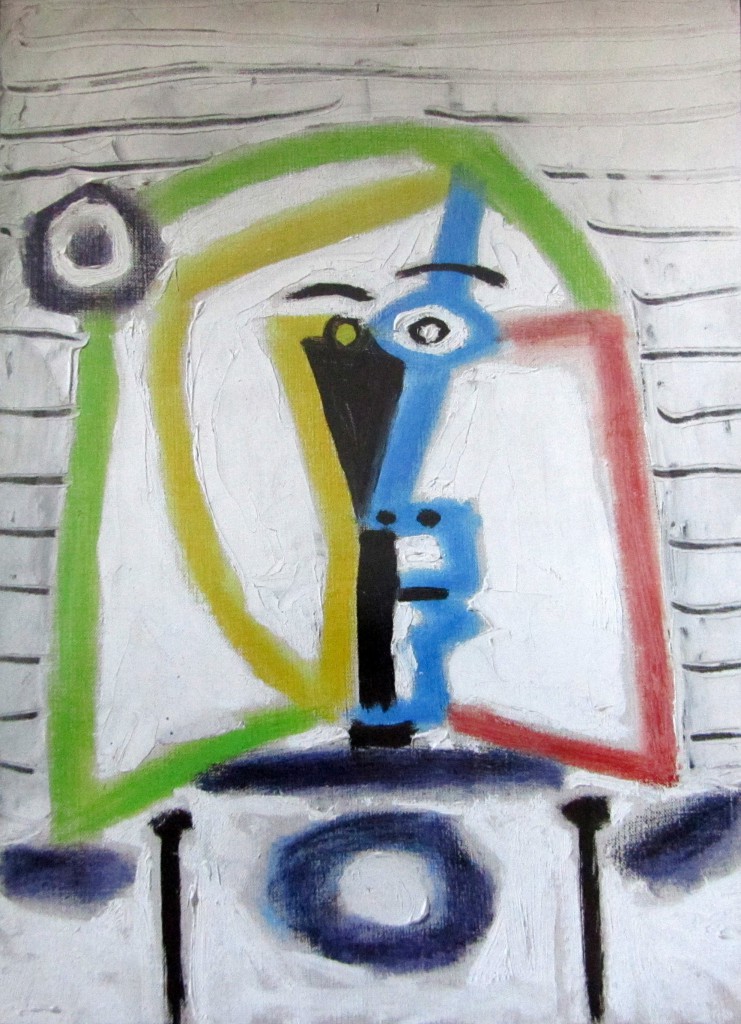

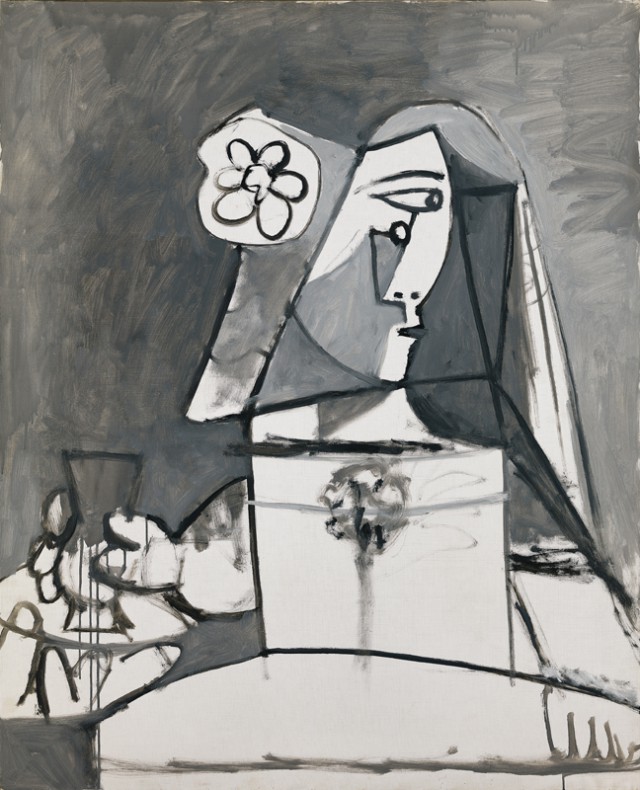

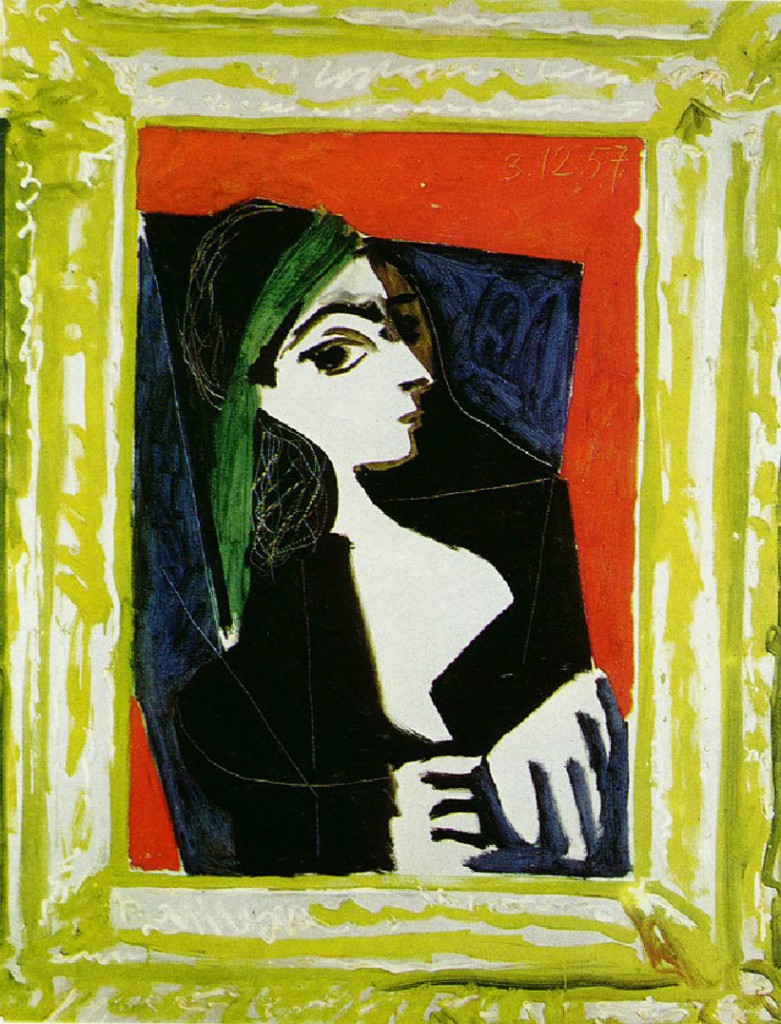


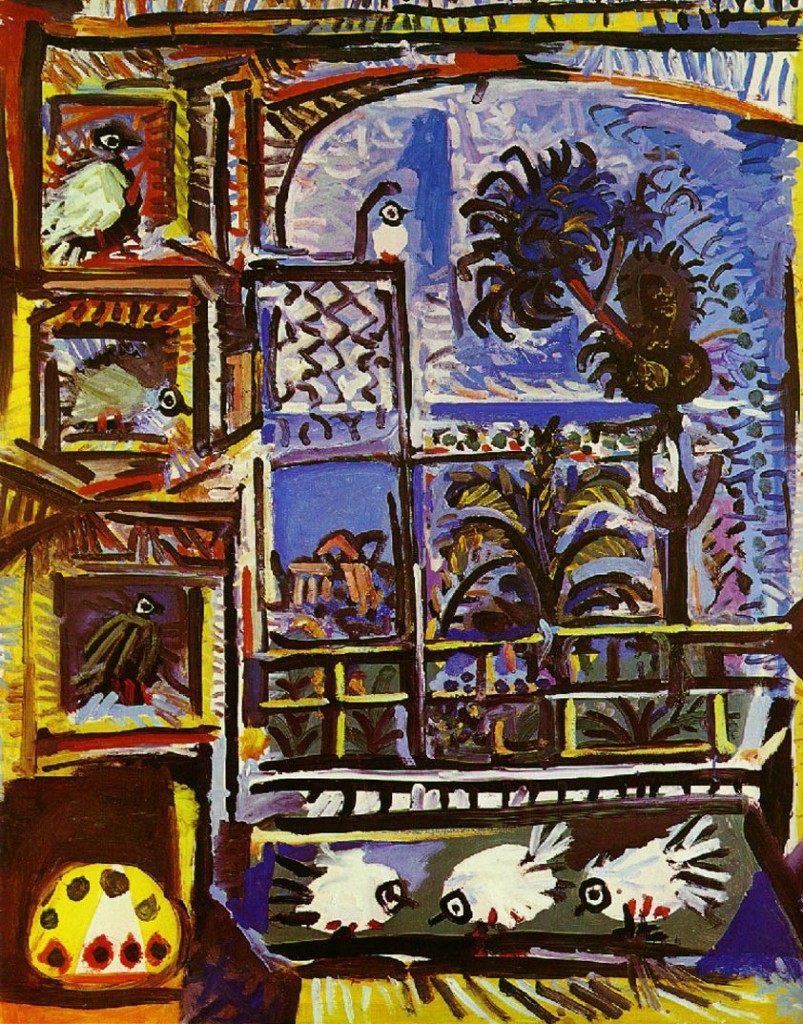


Chris
This is perhaps your best blog. Las Meninas is my favourite painting of all time. We went to Madrid in the late 1980s to see the painting. Unfortunately it wasn’t on show because it was being cleaned, so we looked at Goya and Guernica and went to Toledo to see the El Grecos. On the last morning I walked down to the Prado via a shop selling Goya etchings and almost bought one of the Disaster of War etchings. I walked passed the Las Meninas room and there it was in all it’s glory, newly restored AND with the X-rays the restorers took during the work. The hairs on the back of my neck stood up. It was an unforgettable moment and one I will never forget. Now I will have to go back, and will have to see the Picasso’s too. Your blog brought it all back, thank you.
Thanks Paul, I’m glad it struck a chord. Sounds like you had a privileged view of the Velázquez.
I hadn’t realised Picasso had done quite so many versions of Las Meninas. Amazing to see the engagement of one artist with another.
“Las Meninas” is a Portuguese expression for “Little girls”. Velasquez mother was Portuguese, so this expression was part of his vocabulary.
Many Spanish kings – like Filipe IV, Filipe III and Filipe II – were insane due to the fact that they were a product of consanguinity